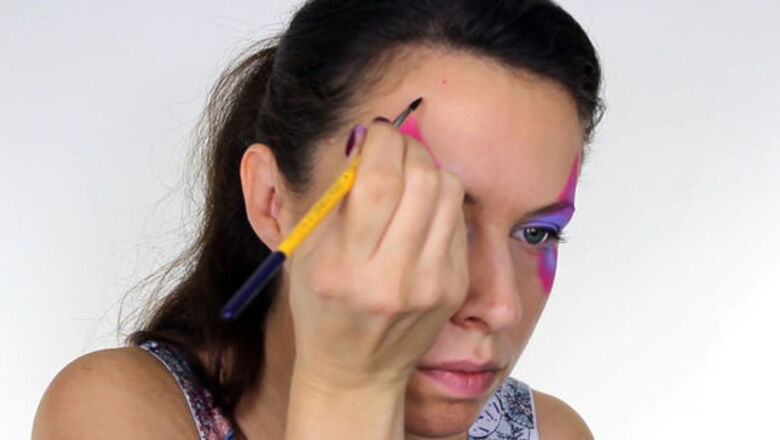
views
Painting the Upper Wings

Gather your face-painting tools. You already know that a butterfly design will take your appearance to the next level, but a paintbrush and face paint won't save you if you make a mistake! Make sure you have a cloth on hand to clean errors, but your list of supplies should also include: Container (for water) Cotton cloth (for removing smudges and errors) Cotton swab/Q-tip (for tidying edges and lines) Glitter (optional) Paintbrushes Water-based face paints
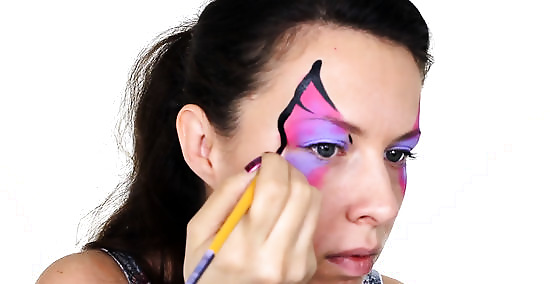
Load up a fine paintbrush with blue paint. Create an arch over one eyebrow, starting at the top of your nose. From there you should trace a steady line above your eyebrow, finishing the line at your temple. Repeat this process for both eyebrows until you have made a shape similar to the top of a heart. Do not connect this line; you should leave a small gap between your arches.
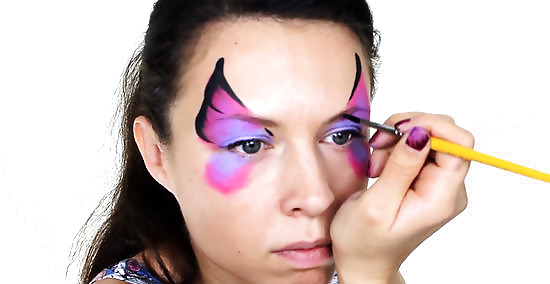
Make sure both sides are even. You don't have to worry if the lines look thick. As long as these lines are roughly the same height and width, your butterfly look will turn out looking great! If your lines haven't come out quite as neatly as you wanted, damp your cloth and wipe any errors free. Then you can dry the skin with a separate cloth and start from scratch. For fine lines or to correct detail work, a damp cotton swab/Q-tip will be more precise.
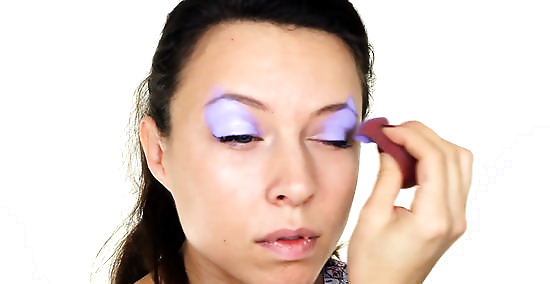
Raise the brow to even out lines. The expressions that naturally occur on your face can wrinkle skin and affect your butterfly design. To make sure the design is consistent no matter your expression, ask your client to raise their brow and even out your lines.
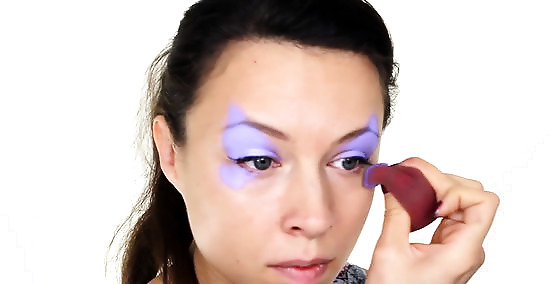
Create an arch below the first eye. You'll want to start just below the beginning of your upper arch. Join it to the outside edge of the upper arch, and do the same with the other side of your face. Butterflies are symmetrical, so take your time and apply your face paint so that each side looks the same.
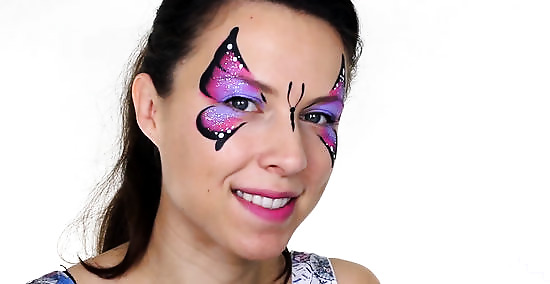
Even out your sides, if necessary. You don't worry about the thickness of your lines, but the contours under the eye can be difficult to paint evenly. To help you achieve an even look that isn't negatively affected by facial expression, ask your client to smile.
Finishing the Wings and Adding Detail
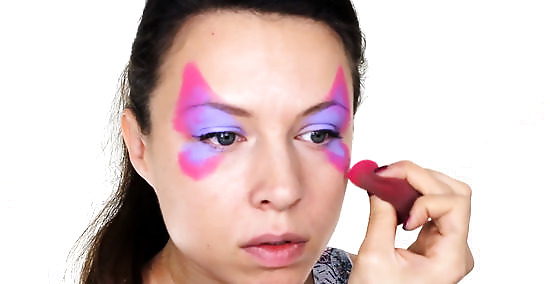
Create the lower butterfly wing. You should do this by painting a sweeping crescent shape with your brush. Starting at the nose, go across the cheek and finally connect your line with that of the top wing. Then, do the same for the other side.
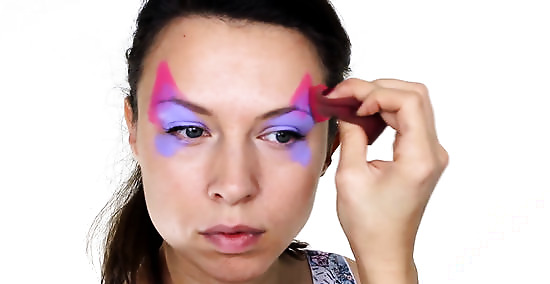
Add some filler. Select a slightly larger brush and load it up with pink paint, or choose another color that matches your color scheme. Fill in one of the lower wings with paint and blend the edges in with your brush as you go. Mirror both the colors and the patter of your first side on the opposite side.

Add more variety to your design. Sticking with your medium sized brush, rinse it and load it with the color of your preference. Paint arcs of this color under each eye, and also the eyebrow area. By following the natural contours of your face, you will likely be able to make more symmetrical lines that imitates the natural markings of a butterfly. Try not to add too many colors to your design. Too many colors that are improperly blended and/or defined can leave design looking less than professional.
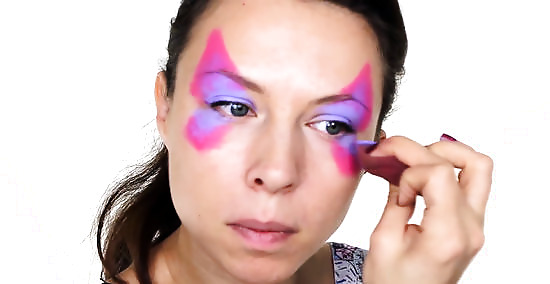
Create contrast. Wash your brush again and dip it into a different color. You should add this paint in small lines just below the new color you added on the eyebrow and under the eye.

Give your outline definition. A high contrast color, like white or black, is especially good for giving definition to your outline. Using a fine brush, create a frilled edge around the outside of the butterfly wings. This does not have to be perfectly symmetrical, but it should be consistent around your entire design. To help maintain consistency, break the larger outline into smaller shapes, like tiny C's. Connecting one end of a C to the next in your series and keeping these roughly the same size will keep your outline balanced.
Painting the Body and Adding Definition
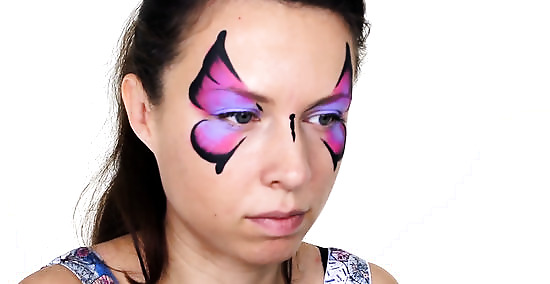
Paint the butterfly body. Using a dark colored paint, like purple, brown, or black, load up your larger paint brush. Paint the body by placing the brush at the top of the nose, then paint downwards to end at the tip. You do not need to pain the entire nose for this effect. Start with a light line and add paint as you feel necessary. You can always add more pain to the body, but too much might have to be removed completely with your cotton cloth.
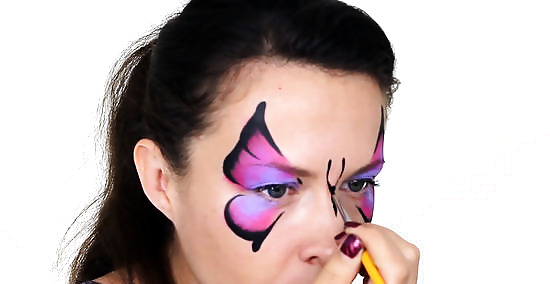
Attach antennae. These can be big and majestic or cute and stubby. While painting this feature, it can help to follow the arch made by the shape of the top wings.
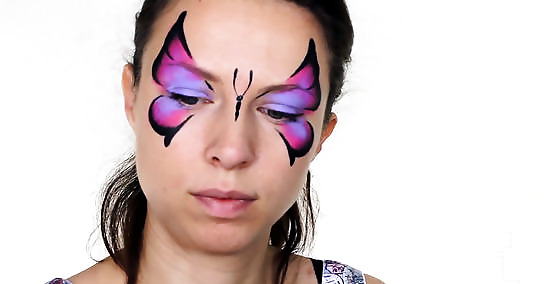
Define the body, if necessary. If you chose to paint your body with black paint, the body of your design likely won't need additional black paint for definition. Other colors, like brown or purple, can be more clearly offset from the rest of your design with a fine brush dipped in black pain. Follow the outside edge of the butterfly body with a fine outline of black.
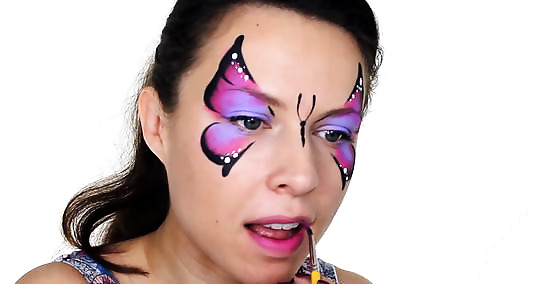
Highlight and detail where necessary. Step back from your nearly finished creation. If you notice any features that blend together too much, you can offset these with a thin line of black along the boundary shared by each color. High contrast colors, like black and white, are ideal for adding emphasis to and highlighting face paint designs. Detail work should be done with a light hand. Too much paint might ruin your design, in which case you'll have to wipe it clean and start afresh.

Add glitter, if desired. Glitter is a great way of highlighting your favorite feature or color in a face paint design, and will also give your butterfly some extra pizzazz. You might also try skin-safe metallic paints, like silver or gold, to add elegance to your face-art.
















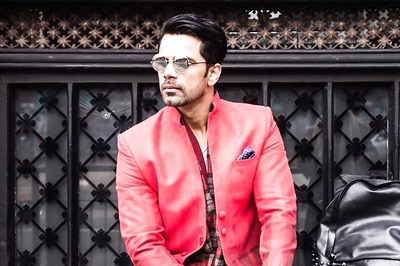

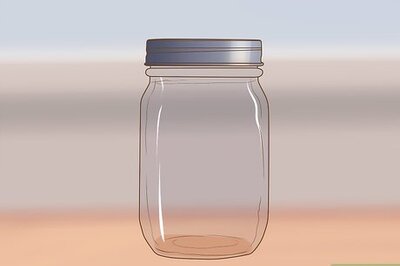
Comments
0 comment